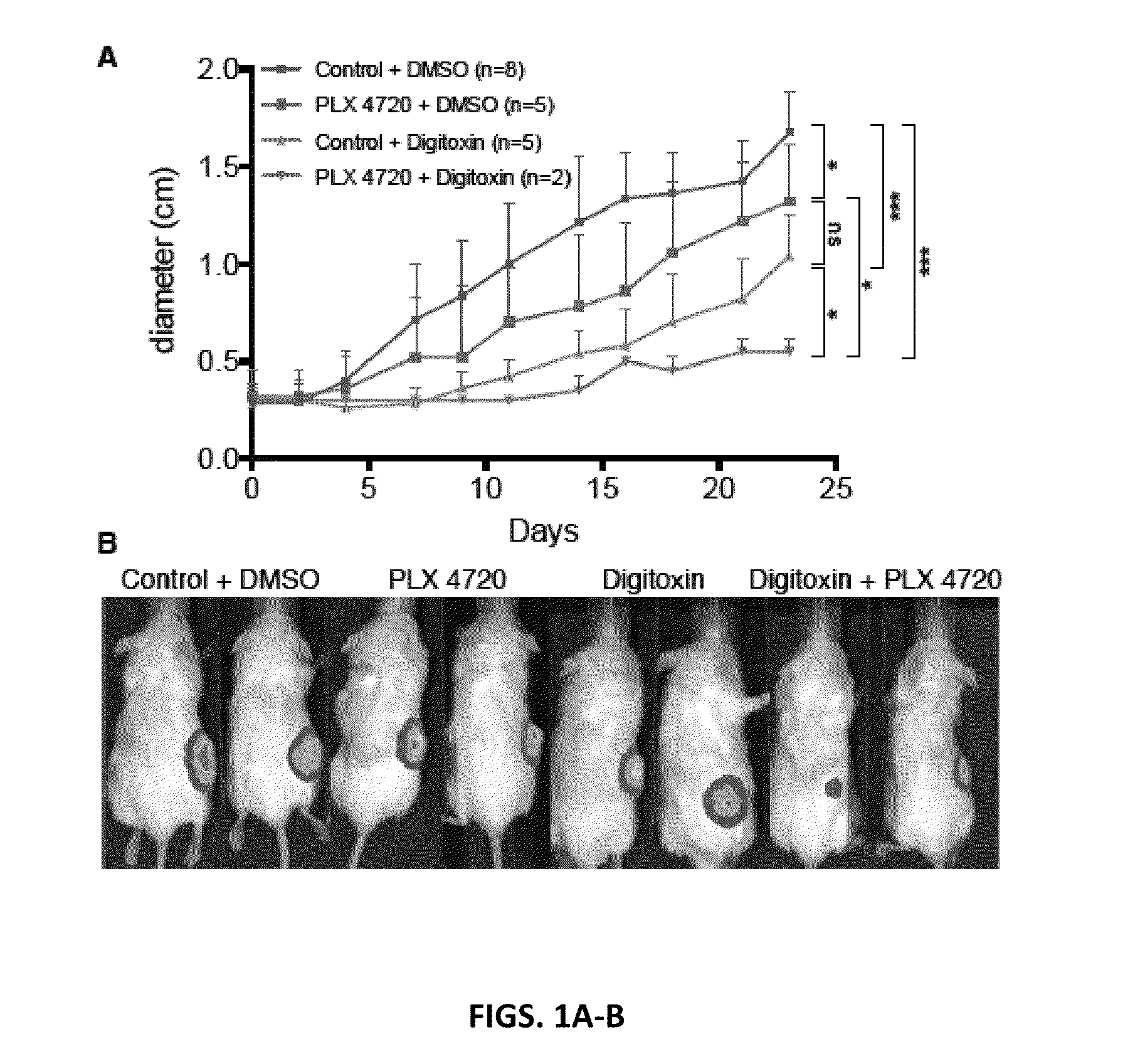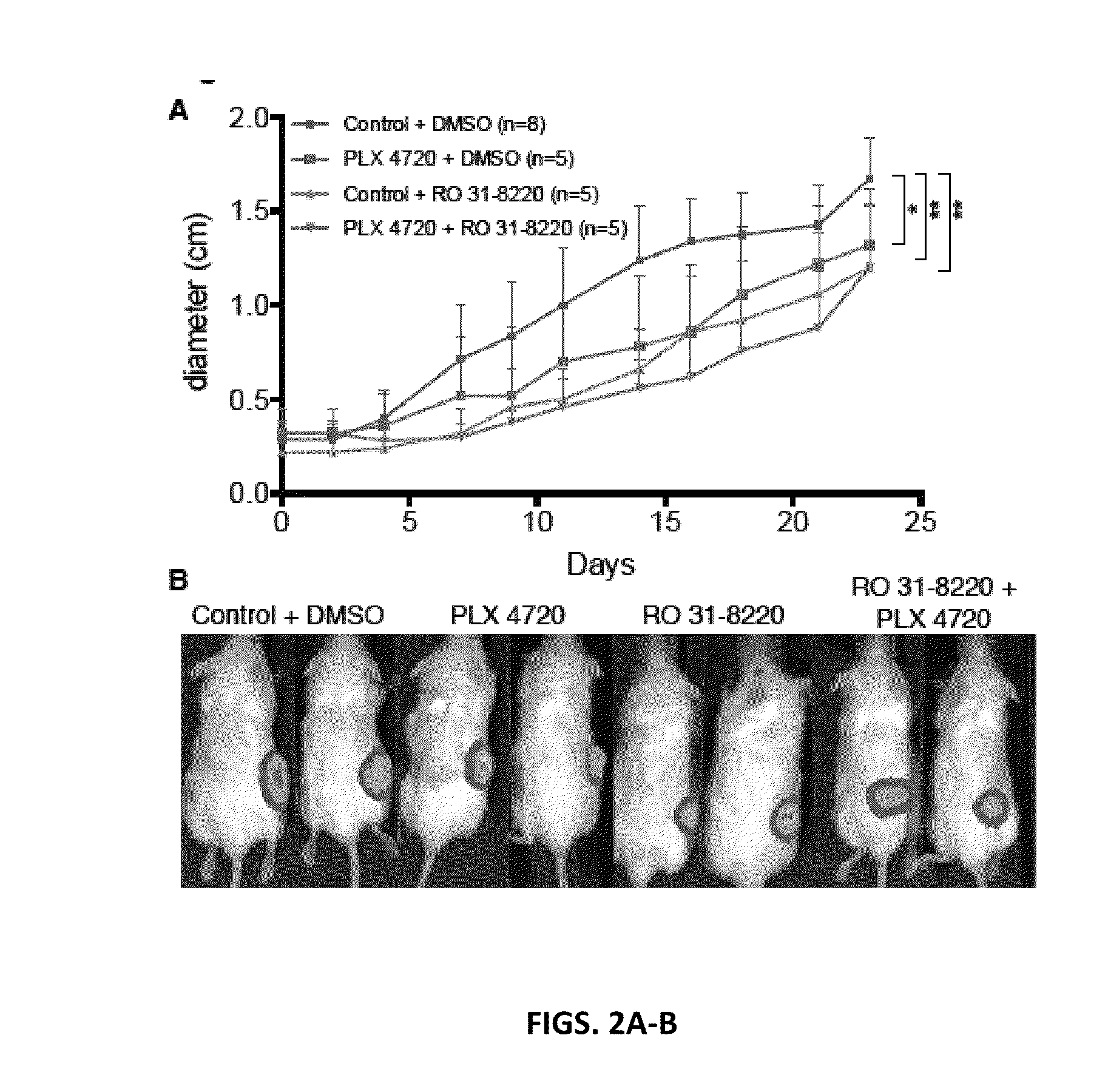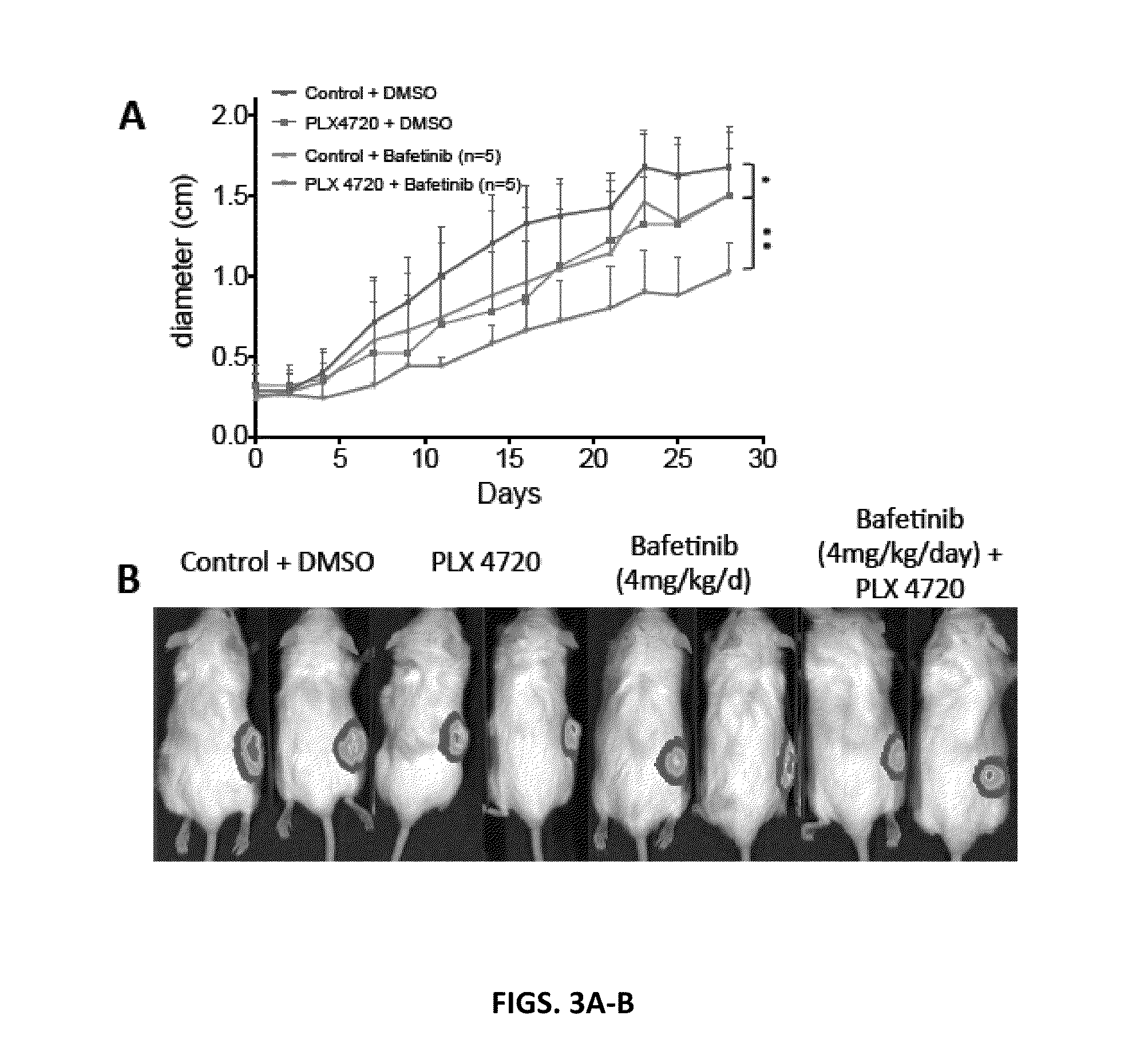Combination treatments for melanoma
a combination therapy and melanoma technology, applied in the field of medicine and oncology genetics, can solve the problems of poor prognosis of metastatic patients, less than 10% of 5-year survival rates, and ajcc stage iii and iv, and achieve the effect of inhibiting the melanoma
- Summary
- Abstract
- Description
- Claims
- Application Information
AI Technical Summary
Benefits of technology
Problems solved by technology
Method used
Image
Examples
example 1
Materials and Methods
[0172]Tissue and Tumor Cell Preparation.
[0173]Melanoma specimens were obtained with informed consent from patients with clinically apparent melanoma disease (biopsy-proven stage II, III, or IV, or obvious clinical stage IV) from which a small (typically 2-5 mm) tissue sample not required for standard-of-care pathology assessment was obtained. Most of the melanomas in this study were regional stage III lymph node or skin / soft tissue disease with palpable, clinically enlarged node(s) or soft tissues, undergoing definitive surgical resection, with biopsy-proven (most often needle core) diagnosis confirmed before surgery. Tumors were mechanically dissociated with a McIlwain tissue chopper (Mickle Laboratory Engineering) before sequential enzymatic digestion in 200 U / ml collagenase IV (Worthington) for 20 min followed by 0.05% trypsin-EGTA for 2 min, both at 37° C. DNase (50-100 U / mL) was added to reduce clumping of cells during digestion. Cells were filtered (40 μm ...
example 2
Results
[0184]Evidence for a BRAF Inhibitor / Cardiac Glycoside in the Blocking Melanoma Growth in a Xenograft Mouse Model.
[0185]The effect of digitoxin on in vivo tumor growth was tested in xenograft assays. In these experiments metastatic melanoma cells were implanted in s.c. tissue on right flanks of NSG mice. When tumors became palpable, mice were i.p. injected with digitoxin (0.5 mg / kg) or DMSO. The efficacy of these treatments was also tested in combination with a BRAF inhibitor (PLX 4720). For PLX 4720 treatment mice were switched to either a chow diet containing 417 mg / kg PLX 4720 or the control chow containing no compound. Tumors were measured every 2-3 day with calipers and bioluminescence imaging was performed at day 14. These pre-clinical mouse xenograft assays showed that digitoxin inhibited the growth of a melanoma better than BRAF inhibitor (PLX 4720) and the combination of digitoxin with PLX 4720 almost completely eradicated tumors (FIGS. 2A-B). These results suggest th...
PUM
| Property | Measurement | Unit |
|---|---|---|
| Time | aaaaa | aaaaa |
| Toxicity | aaaaa | aaaaa |
| Inhibition | aaaaa | aaaaa |
Abstract
Description
Claims
Application Information
 Login to View More
Login to View More - R&D
- Intellectual Property
- Life Sciences
- Materials
- Tech Scout
- Unparalleled Data Quality
- Higher Quality Content
- 60% Fewer Hallucinations
Browse by: Latest US Patents, China's latest patents, Technical Efficacy Thesaurus, Application Domain, Technology Topic, Popular Technical Reports.
© 2025 PatSnap. All rights reserved.Legal|Privacy policy|Modern Slavery Act Transparency Statement|Sitemap|About US| Contact US: help@patsnap.com



